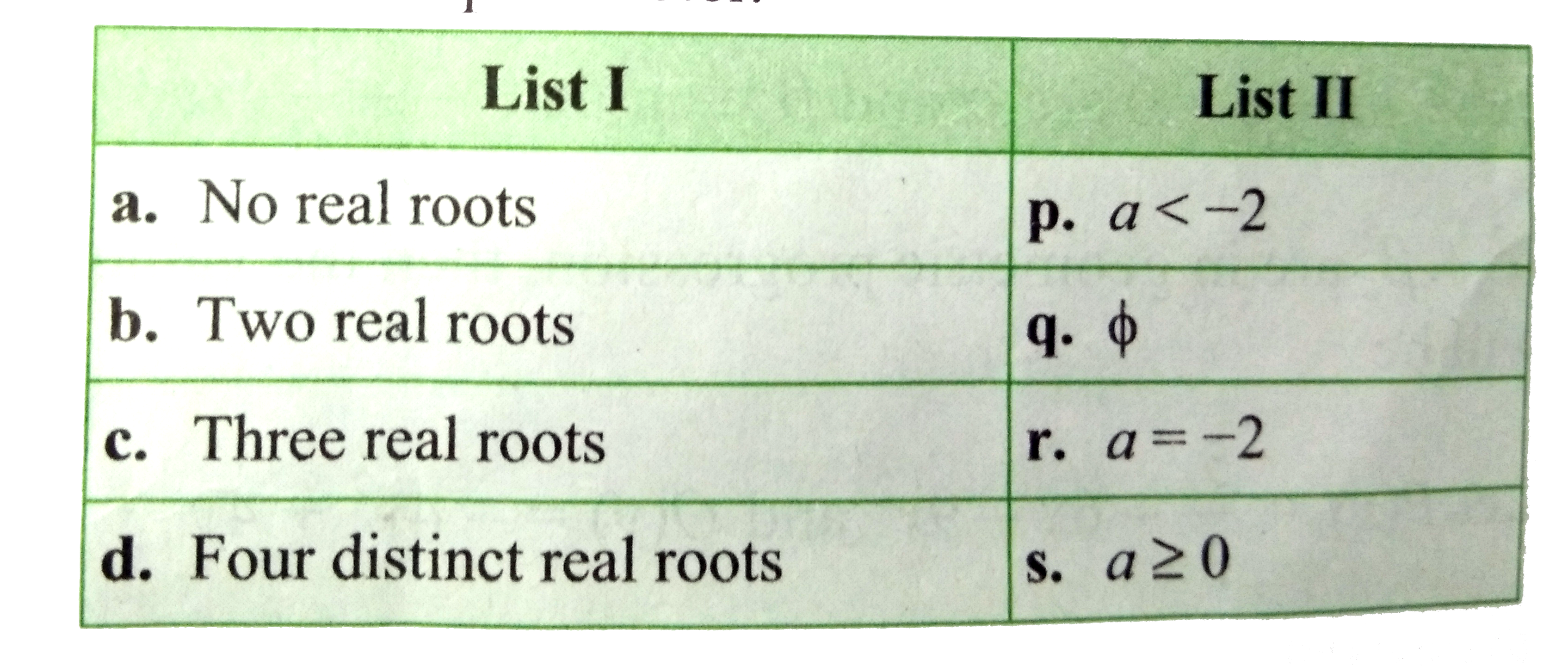If the equation have a root common, then the irrational values of are (a) b. c. b.Solution in Bengali
The correct Answer is:1,4
Roots of are irrational . So , one roots common
implies both roots are common . Therefore ,
Topper's Solved these Questions
- THEORY OF EQUATIONSBook:CENGAGE PUBLICATIONChapter:THEORY OF EQUATIONSExercise:Linked Comprechension Type
Explore 37 Videos
- THEORY OF EQUATIONSBook:CENGAGE PUBLICATIONChapter:THEORY OF EQUATIONSExercise:MATRIX MATCH TYPE
Explore 6 Videos
- THEORY OF EQUATIONSBook:CENGAGE PUBLICATIONChapter:THEORY OF EQUATIONSExercise:Single Correct Answer Type : Exercise
Explore 89 Videos
- STRAIGHT LINESBook:CENGAGE PUBLICATIONChapter:STRAIGHT LINESExercise:ARCHIVES (NUMERICAL VALUE TYPE)
Explore 1 Video
- THREE DIMENSIONAL GEOMETRYBook:CENGAGE PUBLICATIONChapter:THREE DIMENSIONAL GEOMETRYExercise:All Questions
Explore 291 Videos
Similar Questions
Consider an unknow polynomial which divided by (x−3) and (x−4) leaves remainder 2 and 1, respectively. Let R(x) be the remainder when this polynomial is divided by (x−3)(x−4).
If equations R(x)=x2+ax+1 has two distint real roots, then exhaustive values of a are.
View SolutionMatch the following for the equation x2+a|x|+1=0 where, a is a parameter.

View SolutionThe value of expression x4−8x3+18x2−8x+2 when x=2+√3
View SolutionFor a point P in the plane, let d1(P)andd2(P) be the distances of the point P from the lines x−y=0andx+y=0 respectively. The area of the region R consisting of all points P lying in the first quadrant of the plane and satisfying 2≤d1(P)+d2(P)≤4, is
View SolutionFind the angle between the line whose direction cosines are given by l+m+n=0andl2+m2−n2=0.
View SolutionIf the equation 4x2−x−1=0and3x2+(λ+μ)x+λ−μ=0 have a root common, then he rational values of λandμ are λ=−34 b. λ=0 c. μ=34 b.μ=0
View SolutionThree sided of a triangle have equations L1≡y−mix=o;i=1,2and3. Then L1L2+λL2L3+μL3L1=0 where λ≠0,μ≠0, is the equation of the circumcircle of the triangle if 1+λ+μ=m1m2+λm2m3+λm3m1 m1(1+μ)+m2(1+λ)+m3(μ+λ)=0 1m3+1m1+1m1=1+λ+μ none of these
View Solutionint_ (0) ^ (1) (xdx) / (sqrt (x + lambda) + sqrt (x + mu)), lambda! = mu
View SolutionLet λ,μ be such that the equations 4x2−8x+3=0,x2+λx−1=0and2x2+x+μ=0 may have a common root for each pair of equations but all 3 equations do not have a common root, then μ×λ equals
View SolutionFor a,b,in R and a!=0, the equation ax^(2)+bx+c=0 and x^(2)+2x+3=0 have atleast one common root if (a)/(lambda)=(b)/(mu)=(c)/(Psi) where lambda,mu and Psi are positive integers.The least value of (lambda+mu+Psi) is
View SolutionThe length of the tangent drawn from any point on the circle x2+y2+2gx+2fy+λ=0 to the circle x2+y2+2gx+2fy+μ=0 is : (A) √μ−λ (B) √λ−μ (C) √μ+λ (D) none of these
View SolutionIf the equations 4x2−x−1=0 and 3x2+(λ+μ)x+λ−μ=0 have a root common, then the rational values of λ and μ are
View SolutionIf the points A(−1,3,λ),B(−2,0,1)andC(−4,μ,−3) are collinear, then the values of λ and μ are
View SolutionIf the equation x2+λx+μ=0 has equal roots and one root of the equation x2+λx−12=0 is 2 ,then (λ,μ)=
View SolutionThe number of real roots of the equation 4x3−x2+λ2x−μ=0, μ∈R,λ>1 is
View SolutionIf the equation 4x2−x−1=0and3x2+(λ+μ)x+λ−μ=0 have a root common, then the irrational values of λandμ are (a) λ=−34 b. λ=0 c. μ=34 b.μ=0
View Solution